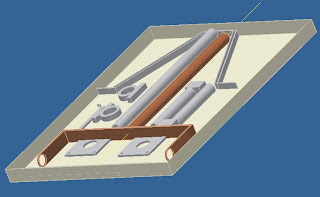First we needed to divide the project into phases
phase one was researching and understanding
This phase included collecting data necessary to start. like previous designs. Angle ranges. how the mechanism should behave and how fast should it respond.
After this phase came these decisions:tracking using 2 axis
active tracking (mechanical)
phase two was conceptual designs for the project
This phase included all team members. we brain stormed for different designs then we narrowed the choices to about 4 or 5 designs which we turned into 3D using Autodesk Inventor. we then chose our final design and went to phase 3
phase 3 the Team was divided into 2 main teams:
Team (1) was responsible for the mechanical design (The actual doing of the mechanism, finishing the calculations , choosing the material used, the coating, fixing the encoders) in addition to packing.
Team (2) was responsible for the control. They settled on the circuit design and then internally divided themselves into two teams:
one responsible for the microcontroller programing
and the other responsible for implementing the circuit.
phase 4 this is when the team came back together for the implementation phase.
during the previous phases we worked on the documentation
we finished the packing, brochure, documentation finalizing and printing on the last moment of course
This is a quick outline for the project. Details on the upcoming posts isA






